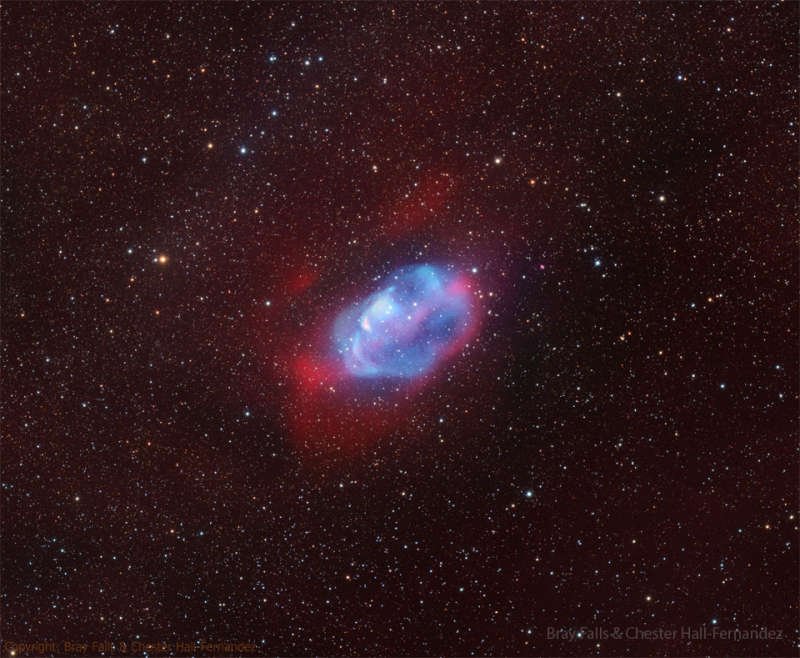
|
Credit & Copyright: Bray Falls &
Chester Hall-Fernandez
Explanation:
This nebula had never been noted before.
Newly discovered nebulas are usually angularly small
and found by professionals using large telescopes.
In contrast, the
Pistachio Nebula was
discovered by dedicated amateurs
and, although faint, is nearly the size of the full Moon.
In modern times, amateurs with even small telescopes
can create long exposures over sky areas much larger than most professional telescopes
can see.
They can therefore discover both
previously unknown areas of
extended emission around known objects,
as well as
entirely unknown objects, like nebulas.
The pictured Pistachio Nebula is shown in
oxygen emission (blue) and
hydrogen emission (red).
The nature of the hot central star is currently unknown,
and the nebula might be labeled a
planetary nebula
if it turns out to be a
white dwarf star.
The featured image
is a composite of over 70 hours of exposure taken in early June under the dark skies
of
Namibia.
|
January February March April May June July August September October November December |
| ||||||||||||||||||||||||||||||||||||||||||||||||
NASA Web Site Statements, Warnings, and Disclaimers
NASA Official: Jay Norris. Specific rights apply.
A service of: LHEA at NASA / GSFC
& Michigan Tech. U.
Based on Astronomy Picture
Of the Day
Publications with keywords: emission nebula
Publications with words: emission nebula
See also:
- APOD: 2025 December 17 Á W5: The Soul Nebula
- APOD: 2025 December 9 Á The Heart of the Soul Nebula
- APOD: 2025 September 19 Á The NGC 6914 Complex
- APOD: 2025 September 10 Á The Great Lacerta Nebula
- APOD: 2025 July 21 Á Cats Paw Nebula from Webb Space Telescope
- APOD: 2025 July 16 Á The Rosette Nebula from DECam
- APOD: 2025 July 5 Á Ou4: The Giant Squid Nebula
